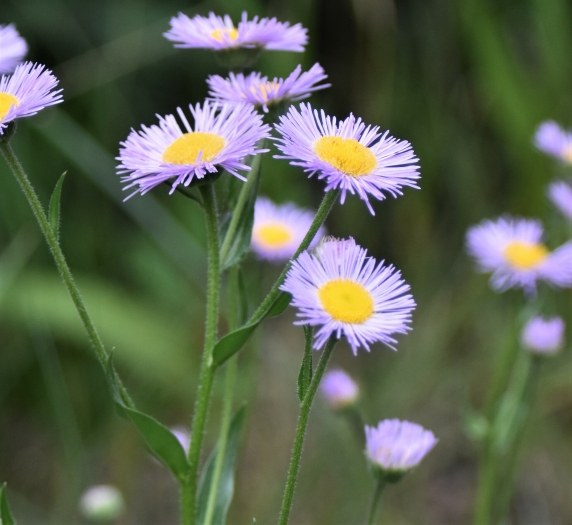Streamside Fleabane
(Erigeron glabellus)
Streamside Fleabane (Erigeron glabellus)
/
/

Eric Lamb
CC BY 4.0
Image By:
Eric Lamb
Recorded By:
Copyright:
CC BY 4.0
Copyright Notice:
Photo by: Eric Lamb | License Type: CC BY 4.0 | License URL: http://creativecommons.org/licenses/by/4.0/ | Rights Holder: Eric Lamb | Publisher: iNaturalist | Date Created: 2023-07-11T20:25:26-07:00 |





















Estimated Native Range
Summary
Erigeron glabellus, commonly known as Streamside Fleabane, is a perennial herb native to a variety of habitats including moist stream banks, wet meadows, and alpine zones in western North America, from Alaska through the northern contiguous United States to the Rocky Mountains. It typically grows up to 28 inches tall and features a clumping form with narrow, lance-shaped leaves. The plant produces daisy-like flowers with white, pink, or blue ray florets surrounding a center of yellow disc florets from late spring to early fall, offering a long season of bloom that is particularly showy.
Streamside Fleabane is valued for its hardiness and ability to thrive in moist conditions, making it a suitable choice for rain gardens, waterside plantings, and naturalized areas. It prefers full sun to part shade and requires consistently moist soil, reflecting its native streamside habitat. While it is not commonly used in formal garden settings, its resilience and attractive flowers make it a good candidate for wildflower gardens and restoration projects. It is generally free from serious pests and diseases, but can be susceptible to powdery mildew in overly humid conditions. Streamside Fleabane can spread by self-seeding, which should be considered when planting in smaller spaces to prevent unwanted proliferation.CC BY-SA 4.0
Streamside Fleabane is valued for its hardiness and ability to thrive in moist conditions, making it a suitable choice for rain gardens, waterside plantings, and naturalized areas. It prefers full sun to part shade and requires consistently moist soil, reflecting its native streamside habitat. While it is not commonly used in formal garden settings, its resilience and attractive flowers make it a good candidate for wildflower gardens and restoration projects. It is generally free from serious pests and diseases, but can be susceptible to powdery mildew in overly humid conditions. Streamside Fleabane can spread by self-seeding, which should be considered when planting in smaller spaces to prevent unwanted proliferation.CC BY-SA 4.0
Plant Description
- Plant Type: Herb
- Height: 1-2 feet
- Width: 0.5-1 feet
- Growth Rate: Moderate
- Flower Color: Blue, Pink, White
- Flowering Season: Spring, Summer
- Leaf Retention: Deciduous
Growth Requirements
- Sun: Full Sun, Part Shade
- Water: Medium
- Drainage: Medium, Fast
Common Uses
Border Plant, Butterfly Garden, Low Maintenance, Water Garden
Natural Habitat
Moist stream banks, wet meadows, and alpine zones in western North America
Other Names
Common Names: Streamside Daisy, Herbe à Puces Lisse, Smooth Fleabane
Scientific Names: , Erigeron glabellus, Erigeron anicularum, Erigeron anicularum var. anicularum, Erigeron anicularum var. latiusculus, Erigeron asper, Erigeron asper f. roseatus, Erigeron asper var. appressus, Erigeron asper var. subinteger, Erigeron asperum
GBIF Accepted Name: